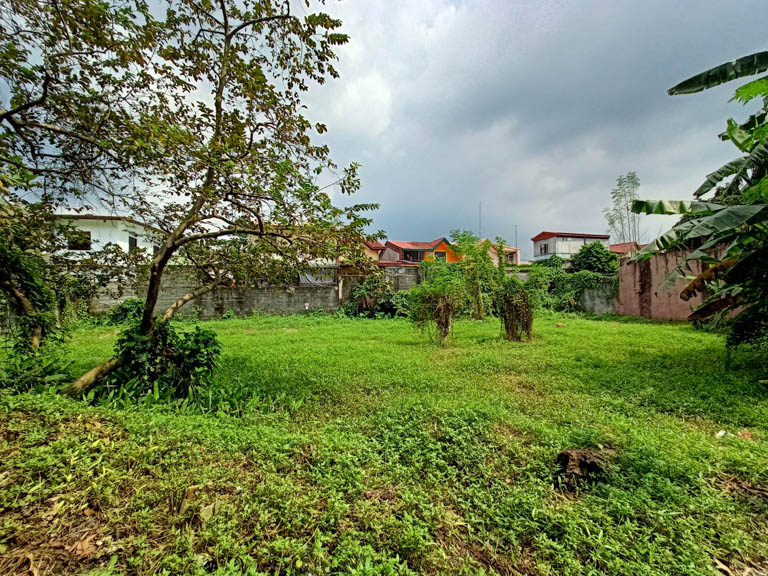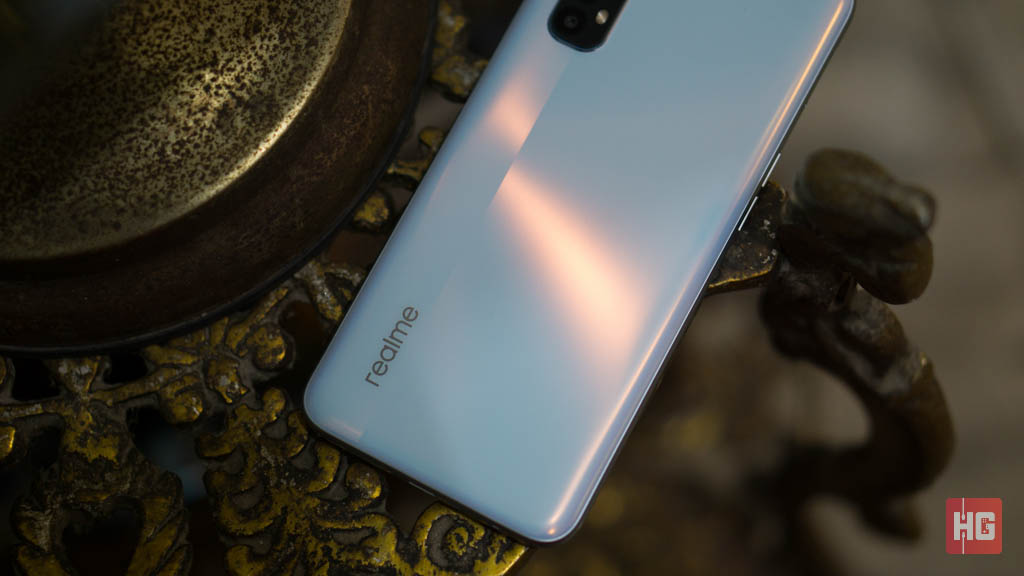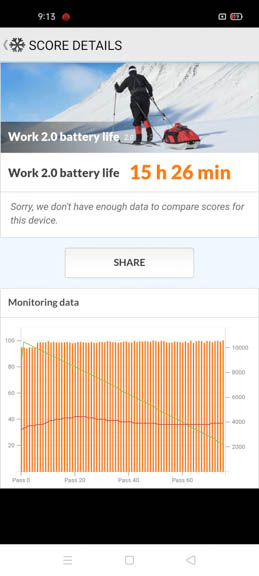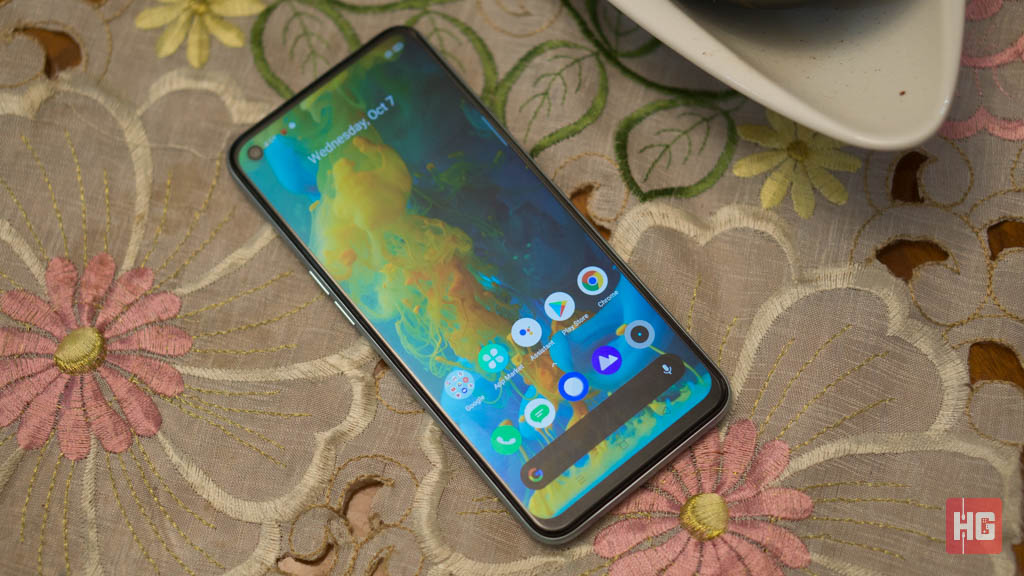
Unlike the 7 Pro, the realme 7 retains the 90Hz display found on its predecessor and improves upon it by having a slightly faster chipset and larger battery. But will these slight improvements be enough for the realme 7 to eclipse the realme 6, which is arguably one of the best bang for the buck smartphones in the market?

| Chipset | MediaTek Helio G95 |
| Screen | 6.5-inch IPS, 2400 x 1080, 90Hz, 480nits, Corning Gorilla Glass 3 |
| RAM | 6GB/8GB |
| OS | Android 10 with realme UI |
| Rear Camera | 64MP f/1.8 Main, 8MP f/2.3 Ultrawide, 2MP f/2.4 Macro, 2MP f/2.4 Depth |
| Front Camera | 16MP f/2.1 |
| Storage | 64GB/128GB UFS 2.1, expandable via MicroSD Slot |
| Network | Dual-SIM, 4G LTE |
| Connectivity | Dual-band WiFi 802.11ac, Bluetooth 5.0, USB Type-C |
| Battery | 5,000mAh, 30W Fast Charging |
| Others | Side-mounted Fingerprint Scanner |
| Colors | Mist Blue, Mist White |

The realme 7 comes complete with all the necessities you would need for a smartphone. Encased in the brand’s now iconic yellow box is the smartphone itself, a USB Type-C cable, a 30W Dart charger, a silicone case, documentation, and a SIM ejector pin.

While the 7 Pro goes the 60Hz Super AMOLED route, the realme 7 comes with a 6.5-inch IPS 2400 x 1080 display with a 90Hz refresh rate. This means that panel speed remains the same as its predecessor. In addition, the panel is protected by a Corning Gorilla Glass 3 as well as a pre-applied screen protector.
Colors produced by the realme 7’s IPS display are pretty vivid while the blacks are okay though they are not on par with its Super AMOLED screen, which is expected. Brightness, on the other hand, is fairly average and allows for full functionality under sunlight. As we have said before, the 90Hz refresh rate is a noticeable upgrade from 60Hz and can be felt in general use, but most importantly, in gaming as well.

In terms of design, the realme 7 goes further into the minimalist direction than its predecessor. It now shares the same two-tone design as the 7 Pro. Although it looks a bit plain to our eyes, it does look a bit premium even if it’s made out of plastic. The rear also comes with a coating that reduces the visibility of fingerprints and smudges appearing.
Placement of the buttons and ports stay largely the same on the realme 7. At the left-hand side are its volume buttons and triple-cut SIM tray while the right-hand side houses its power button with an integrated fingerprint scanner. At the bottom are the realme 7’s 3.5mm audio jack, USB Type-C port, and bottom-firing speaker grilles.
Like most of the brand’s recent smartphone entries, the realme 7 runs on Android 10 with realme UI. While it still has some callbacks from ColorOS such as its Smart Sidebar, it largely sticks to a stock Android experience.
Some bloatware are already pre-installed on the smartphone though you can skip downloading and installing some of them on startup. All options that you need to use the smartphone efficiently is available such as its control center, swipe down notification bar, gesture controls, multi-window support, easy dark mode toggle, and the ability to customize your icons.

The realme 7 sports a quad camera setup at the back composed of a 64MP f1/.8 main camera, an 8MP f/2.3 ultrawide, a 2MP f/2.4 macro, and a 2MP f/2.4 mono portrait, which is largely the same as the 6. The difference, however, is that the former is now powered by a Sony IMX682 sensor that promises to deliver a heightened photography experience.
Taking snaps using the main 64MP f/1.8 main lens yielded decent results. Colors on photographs are punchy while delivering enough contrast and detail. There are some sharpness boosting happening in the background, however, which leads to some pictures to look somewhat more aggressive to the eyes.

The 8MP f/2.3 ultrawide performs largely the same as the main camera. Sharpness is a touch high for our liking but photos still look well detailed with vivid colors despite being down on pixel count.

The realme 7 is powered by a MediaTek Helio G95 with 8GB of RAM and 128GB of internal storage. Its chipset is basically an upgraded version of the Helio G90 found on the realme 6. Both chips come with two Cortex-A76 cores clocked at 2.05GHz and six more Cortex-A55 cores running at 2.0GHz. The main difference is that the G95 has a 900MHz Mali-G76 MC4 GPU, which runs 100MHz higher compared to the G90.
As for benchmarks, the realme 7 pumps out decent numbers for a midrange device. It scores just shy of 10,000 in PCMark Work 2.0, 297,178 in AnTuTu, and 2,772 in 3DMark Sling Shot Extreme on the Vulkan API. Playing games with the device posed no problems as well. Titles such as PUBG Mobile and Call of Duty: Mobile performed without any hiccups whatsoever.
Battery life is slightly better than its predecessor. The 7 now comes with a 5,000mAh battery, which is 700mAh larger than the realme 6. Charging stays the same at 30W Dart charge. Based on our usage, the realme 7 is able to last more than a day with medium usage with occasional gaming and mobile data usage.

Benchmarks put it at around 15 hours and 26 minutes with 50% brightness and volume, which is to be expected given that it has such a large battery capacity. Charging from 0% to full should take around 90 minutes, which is fairly fast given the circumstances.

Packing an upgraded chipset, a minimalist design, a better imaging sensor, and a 6.5-inch 90Hz screen, the realme 7 packs quite a lot of performance in a smartphone. Its larger battery is also a welcome update just to squeeze a few more moments of usage with the smartphone.

It is a bit more expensive, however, compared to the realme 6. Priced at PhP 14,990, the realme 7 offers only an incremental upgrade to the brand’s already existing smartphone range.

If you have already got a realme 6 or something similar, you won’t be missing out by skipping on the 7. If you are coming from an older smartphone, then the realme 7 is definitely a solid upgrade choice, which is why we are giving the device our seal of approval.
